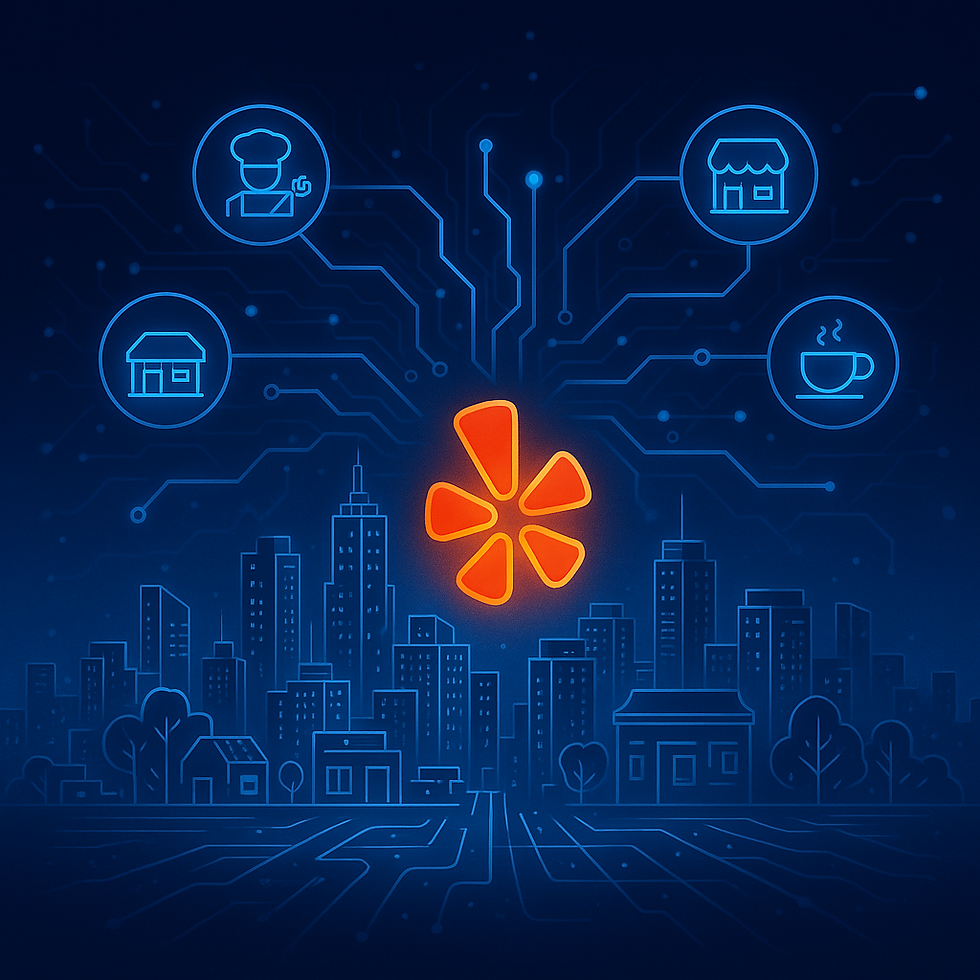Sweetgreen Earnings: Sales Slip as Brand Bets on Menu Innovation and Automation Shift
- Hardik Shah
- 1 hour ago
- 4 min read

TL;DR
Revenue Strength: Total revenue fell 0.6% to $172.4M, driven by a 9.5% same-store sales decline.
Margin Trends: Restaurant-level profit margin contracted to 13.1% from 20.1%, with adjusted EBITDA turning negative.
Forward Outlook: Management is retooling operations and menu strategy while reducing growth pace and unlocking liquidity via the sale of its automation arm, Spyce.
Business Overview
Sweetgreen, Inc. (NYSE: SG) operates more than 266 fast-casual restaurants across the United States, emphasizing healthy, made-from-scratch meals and a digitally integrated experience. Its business is split across dine-in and digital channels, with digital orders comprising 61.8% of total sales and owned digital channels (app and website) representing 35.3%.
The company positions itself as a lifestyle brand focused on food transparency, sustainability, and community-driven sourcing. With its Infinite Kitchen automation platform, Sweetgreen aims to boost consistency, throughput, and profitability across its store base.
Sweetgreen Earnings
Revenue: Q3 revenue declined 0.6% year-over-year to $172.4 million, impacted by a 9.5% same-store sales decline stemming from an 11.7% drop in traffic, only partially offset by 2.2% in pricing benefits.
Profitability:
Loss from operations: $(36.3) million (margin: -21.0%) vs. $(21.2) million (margin: -12.2%) last year.
Restaurant-Level Profit: $22.5 million (13.1% margin) vs. $34.9 million (20.1%).
Net loss: $(36.1) million, widening from $(20.8) million in Q3 2024.
Adjusted EBITDA: $(4.4) million vs. +$6.8 million last year.
Cost pressures included higher protein portions (up 25%), increased packaging tariffs, and a one-time write-off of discontinued materials. General and administrative expenses improved to 17.9% of revenue (down from 21.2%) due to lower stock-based compensation and salary reductions.
Cash and Liquidity: Sweetgreen ended the quarter with $130 million in cash, bolstered by plans to infuse roughly $100 million from the sale of its Spyce automation arm to Wonder.
Forward Guidance
For fiscal 2025, management updated guidance to:
Revenue: $682M–$688M
Same-store sales: (8.5)% to (7.7)%
Restaurant-Level Margin: 14.5%–15%
Adjusted EBITDA: $(13)M to $(10)M
Net New Restaurant Openings: 37, with 18 Infinite Kitchen units
Looking ahead to 2026, the company plans 15–20 new restaurants, roughly half featuring Infinite Kitchen automation, reflecting a shift toward capital discipline and profitability focus.
Operational Performance
CEO Jonathan Neman described 2025 as a “reset year,” with efforts concentrated on five pillars under the Sweet Growth Transformation Plan:
Operational excellence via “Project One Best Way” and new zone-based restaurant standards.
Brand relevance, with CMO Zipora Allen introducing lifestyle-driven campaigns to re-engage urban markets.
Food quality & innovation, including protein-focused marketing and a new steak bowl and steak plate launch.
Personalized digital experience, leveraging the SG Rewards program to drive loyalty and frequency.
Disciplined, profitable investment, focusing on efficiency and reduced store growth.
COO Jason Cochran’s operational initiatives have raised the share of restaurants meeting Sweetgreen’s internal standards from 33% to 60%, a key step toward service and consistency improvement.
Market Insights
Sweetgreen’s core urban customer—25–35-year-olds—remains under financial pressure, leading to decreased frequency, especially in Northeast and Los Angeles markets, which account for 60% of comparable sales. Dinner traffic softened relative to lunch, suggesting shifting consumer habits in post-workday occasions.
The brand continues to see value sensitivity, prompting a reevaluation of its menu and pricing architecture to introduce clearer entry price points and reinforce value communication around its “made-from-scratch” and antibiotic-free positioning.
Consumer Behavior & Sentiment
Sweetgreen’s SG Rewards loyalty program, launched earlier this year, reached six months of operation with ~20,000 new activations per week. The program has lifted frequency among engaged guests, with management planning to use targeted promotions and personalized offers to attract lighter users.
However, the discontinuation of the Sweetpass+ subscription negatively impacted revenue visibility and loyalty deferrals in the short term.
Strategic Initiatives
The sale of Spyce to Wonder represents a major pivot in Sweetgreen’s automation strategy. The $186 million transaction (cash and Wonder stock) enables the company to maintain access to the Infinite Kitchen platform while transferring manufacturing and R&D responsibilities.
“The Infinite Kitchen remains central to Sweetgreen’s future... Partnering with Wonder enables us to leverage their manufacturing scale, R&D investments, and shared innovation,” said CEO Jonathan Neman.
New product innovation continues, including handheld offerings slated for early 2026 market tests and seasonal menu expansions aimed at increasing dining occasions.
Capital Allocation
CFO Jamie McConnell, newly appointed in Q3, emphasized liquidity discipline and expense scrutiny.
“I’ve launched a full review of our restaurant-level expenses and G&A structure to ensure we’re operating as efficiently as possible,” she said.
The company expects $8 million in annualized G&A savings as the Spyce team transitions out and aims for cash-on-cash returns above 40% on new restaurants. Sweetgreen continues to avoid leverage, focusing on maintaining a strong cash cushion amid weaker sales trends.
The Bottom Line
Sweetgreen’s Q3 paints a picture of a brand in transition—tightening execution, refining its value proposition, and monetizing its automation assets to stabilize profitability. The path to recovery hinges on traffic improvement, menu differentiation, and digital engagement.
Investors should watch for:
Early traction from the protein campaign and upcoming steak launch.
Loyalty-driven frequency gains in Q4.
Execution on cost savings and Infinite Kitchen scale economics through the Wonder partnership.
--



Comments